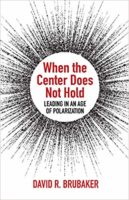Eighteen years ago, I surveyed 100 congregations in the American southwest regarding their experience of change and conflict in the previous five years. Only one change was negatively associated with conflict—meaning that it made conflict less likely. Congregations that started a “new community outreach” in the previous five years were less likely to report a significant conflict than similar congregations that did not.
Why would starting a project in the community make a congregation less prone to destructive conflict? The answer is simple. Congregations with an exclusive internal focus will inevitably find much to quibble about, whereas externally focused congregations experience an internal alignment around a shared purpose.
A Time for Every Purpose
Congregations are like individuals—there are circumstances when an internal focus is both necessary and appropriate. This would include times of leadership transition, experiences of trauma and loss, and periods of wrestling with major theological questions. But as with an individual, when the internal focus stretches into years there is a danger of obsessive introspection at the expense of outward purpose.
A healthy congregation celebrates marriages, dedicates babies, and commemorates the lives of the departed. Every congregation must also attend to the administrative realities of balancing a budget, maintaining a facility, and making payroll. However, a congregation focused only on the needs of its members and the demands of its building and employees is likely a congregation in decline. To paraphrase William Temple, “a congregation is the only association that exists for the benefit of those who are not its members.”
Sowing Seeds of Hope
Prodded by its pastor, Rev. Rick Lemberg, the First Presbyterian Church of Casa Grande, Arizona, established a ministry to serve lower-income members of the community. The congregation’s governing board formed an eleven-member steering committee, developed a budget, and searched for an executive director. Following a two-year developmental process, I came in 1992 as the first executive director of the ministry, called Seeds of Hope.
In five years we established three programs:
- The Hot Lunch Program served daily meals to the homeless.
- Youth Engaged in Service offered supervised community service to court-referred youth.
- Cabana Community Center provided programs for youth and a safe haven for children in a low-income neighborhood.
We also worked to recruit representatives of other local congregations to serve on the board and to volunteer in the programs, ultimately resulting in a board that represented 10 different congregations.
While Seeds of Hope received significant acclaim from community leaders and the local newspaper, the impact on the host congregation was also notable. First Presbyterian Church grew numerically during this period (1992 to 1997), dozens of congregational members volunteered to serve in Seeds of Hope programs, and the congregation knew that it existed not just for its members but for the whole community. Normal disagreements and administrative challenges continued, of course, but the congregation was looking out the window rather than in the mirror. Seeds of Hope continues as a thriving, community-based 501c3 organization, with administrative offices still located in First Presbyterian.
Looking Out the Window
Healthy congregations look out the window—and head out the door. Unhealthy congregations, like unhealthy individuals, are self-absorbed. They worry about worship attendance and giving rather than engage in service. They develop a “scarcity mentality” and organize turf wars over who will get what share of a steadily shrinking pie. They become oblivious to the community outside the doors of their congregation. Meanwhile, conflict escalates as members begin to blame each other for the evident decline.
Is it possible for a congregation accustomed to gazing only in the mirror to look instead out the window? Yes, but there are three essential preconditions for this shift to occur:
1. Leaders teach that the congregation exists not only to serve its members but also to serve its community.
Sermons and homilies too often focus on the beliefs and practices that members are urged to adopt, rather than on the needs of the surrounding community. But the sacred texts of Judaism and Christianity provide many examples of faith communities called to be “a light to the Gentiles”—to serve those outside of the bounds of the congregation itself. Rabbis and ministers can begin by focusing on those texts, calling congregants to expand their vision.
2. Leaders model this call by themselves serving beyond the congregation.
Rev. Rick Lemberg, the lead minister at First Presbyterian Church of Casa Grande, dedicated several hours each week to coaching community youth on soccer and tennis teams. The lay leaders of the congregation understood that this was Pastor Rick’s way of practicing what he was preaching—that the congregation must engage with the community. Professional staff and key lay leaders all model this same commitment—that the congregation exists to serve its community, not just its members. You may want to consider ordering Becoming a Missional Church, a resource from Building Church Leaders.
3. The congregation’s budget demonstrates a commitment to its community.
While a strategic plan reflects a congregation’s aspirations, the annual budget reflects its realities. When we look at a congregation’s budget we expect to see “staff salaries” and “building maintenance” consuming the largest share. However, a healthy congregation also demonstrates a commitment to giving beyond itself by investing in its community.
Will your congregation gaze into the mirror…or look out the window? Ironically, a congregation that tries to save its life by continual self-focus will lose it, but a congregation that gives its life away by offering itself freely in service to the community thrives. Our congregations are not intended to serve only their own members. They were designed as instruments of service to enable and equip their members to engage in service to their community. Once we look out the window, everything changes.
This article first appeared in Perspectives in 2018.
David Brubaker has consulted with organizations and congregations in the U.S. and a dozen other countries on organizational development and conflict transformation. He is the author of Promise and Peril, on managing change and conflict in congregations, and When the Center Does Not Hold, on leading in an age of polarization. David serves as Dean of the School of Social Sciences and Professions at Eastern Mennonite University and is a professor of organizational studies.



